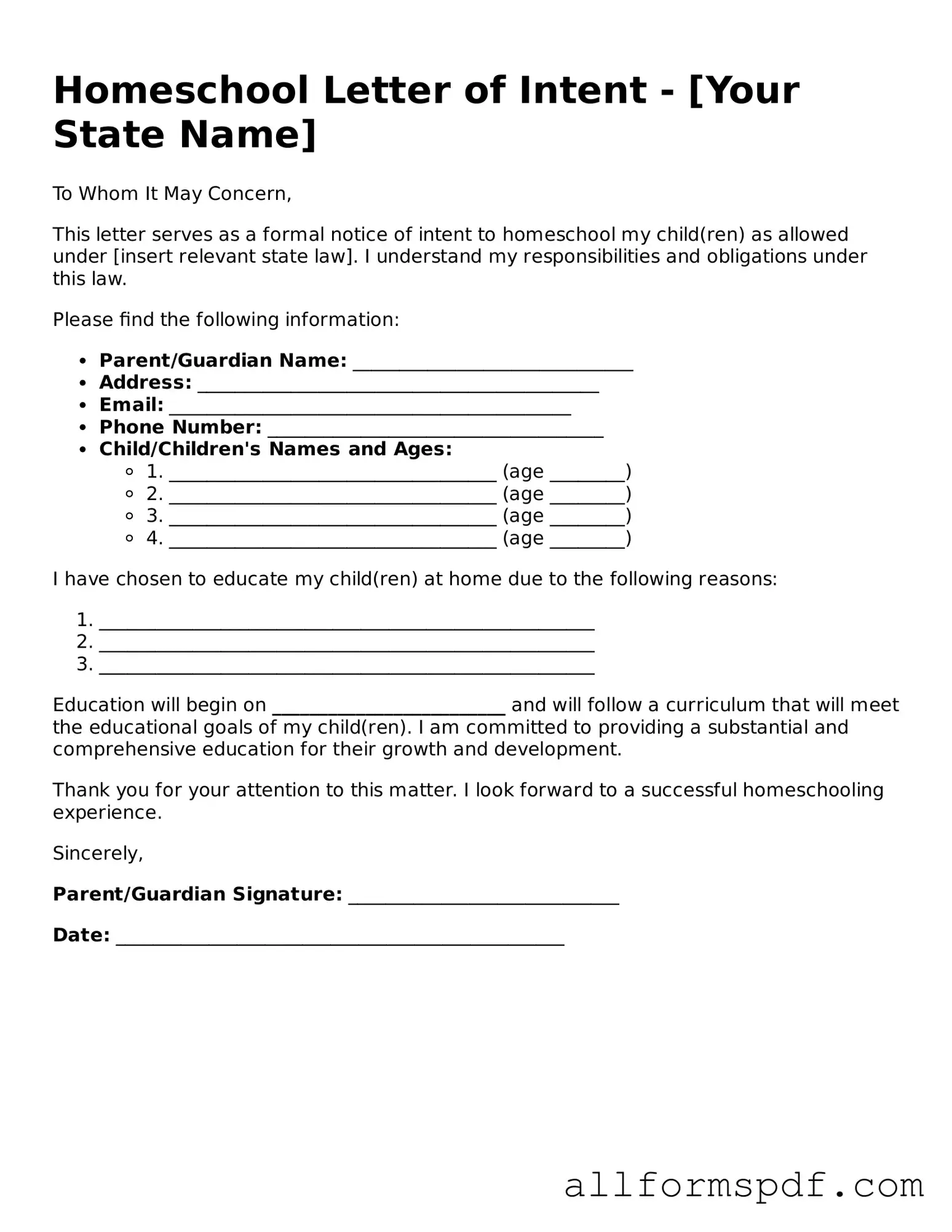When filling out the Homeschool Letter of Intent form, many individuals make common mistakes that can lead to delays or complications. One frequent error is failing to provide complete information. Each section of the form requires specific details, such as the names and ages of the children being homeschooled. Omitting this information can result in the form being rejected.
Another mistake is using incorrect or outdated contact information. It's crucial to ensure that your phone number and address are current. If the school district needs to reach you for any reason, outdated contact details can create unnecessary communication issues.
Some people overlook the importance of signatures. The form typically requires a signature from the parent or guardian. Without it, the document is incomplete and cannot be processed. Always double-check that you have signed the form before submission.
Additionally, many applicants fail to meet the submission deadline. Each state has its own timeline for when the Letter of Intent must be filed. Missing this deadline can lead to legal complications, so it's wise to be aware of the specific due dates in your state.
Another common error is misunderstanding the educational plan requirement. Some states ask for a brief description of the educational approach you plan to take. Failing to include this information can lead to questions from the school district. Providing a clear outline of your educational philosophy can help avoid confusion.
Inaccurate information about the educational materials can also be a pitfall. If the form requests details about the curriculum, be sure to list the resources you intend to use. Incomplete or vague descriptions may raise red flags during the review process.
Many individuals neglect to keep a copy of the submitted form. Retaining a copy for your records can be invaluable if any issues arise later. It serves as proof of your submission and can help clarify any misunderstandings.
Some people may also fail to follow up after submitting the form. It's important to verify that the school district has received and processed your Letter of Intent. A simple phone call can confirm that everything is in order.
Lastly, not researching state-specific requirements can lead to errors. Each state has unique laws regarding homeschooling. Familiarizing yourself with these rules can help ensure that your form is filled out correctly and that you remain compliant with local regulations.
